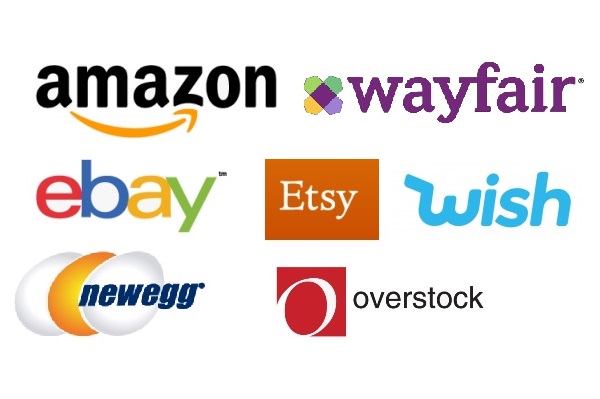
With each passing year it seems the field of digital marketing becomes more expansive. There are new tools, technologies, and capabilities available for marketers and businesses to add to their communications mix. Below we’ll rundown and define 20 elements, grouped by function, that should be considered during your planning. We’ll start with the basic approach, things that haven’t changed since the beginning.
Planning and Research
- Clear Goals and Objectives: Start by defining your campaign’s goals and objectives. Whether it’s increasing brand awareness, generating leads, driving sales, or enhancing customer engagement, having clear objectives is crucial for effective planning and measurement.
- Target Audience Analysis: Identify and understand your target audience. Define their demographics, interests, behaviors, and pain points. This information helps you tailor your campaign messages and select the most effective marketing channels.
Web Development
- Website Optimization: Ensure your website is optimized for user experience (UX) and search engines. Improve page load speed, mobile responsiveness, navigation, and design. Implement search engine optimization (SEO) techniques to enhance organic visibility.
Content Strategy
- Content Strategy: Develop a content strategy that aligns with your campaign goals. Create high-quality, relevant, and valuable content in various formats (e.g., blog posts, videos, infographics) to attract and engage your target audience. Content should address their needs, answer their questions, and provide solutions.
- Video Marketing: Create and distribute compelling video content on platforms like YouTube, Vimeo, or social media channels. Video marketing can help you tell engaging stories, demonstrate products, and connect with your audience on an emotional level.
- Affiliate Marketing: Partner with relevant websites or influencers to promote your products or services in exchange for a commission on sales or referrals. Affiliate marketing can expand your reach and drive conversions through the networks of your partners.
Paid Advertising
- Search Engine Marketing (SEM): Utilize paid search advertising (e.g., Google AdWords) to display ads prominently in search engine results pages (SERPs) for relevant keywords. Craft compelling ad copy, choose appropriate keywords, and optimize landing pages for better conversion rates.
- Display Advertising: Utilize banner ads, rich media, and other visual ad formats across websites, apps, and ad networks to increase brand visibility and reach a broader audience. Target specific demographics, interests, or websites relevant to your audience.
- Social Media Marketing (SMM): Leverage social media platforms (e.g., Facebook, Instagram, Twitter) to reach and engage your target audience. Create and promote engaging content, build a community, run targeted ads, and monitor conversations to nurture relationships and drive brand awareness.
- Email Marketing: Develop an email marketing strategy to nurture leads and build relationships with your audience. Segment your email list based on user interests and behavior. Send personalized, targeted emails to deliver valuable content, promotions, and updates.
- Influencer Marketing: Collaborate with influencers or industry experts who have a significant following and influence over your target audience. Partner with them to promote your brand, products, or services, and leverage their credibility and reach to enhance brand visibility.
- Remarketing/Retargeting: Implement remarketing campaigns to re-engage users who have previously interacted with your brand but haven’t converted. Display relevant ads to remind them about your offerings and encourage them to take action.
Measurement and Optimization
- Analytics and Measurement: Use web analytics tools like Google Analytics to track and measure the performance of your campaigns. Monitor key metrics, such as website traffic, conversion rates, click-through rates, and ROI. Analyze the data to optimize your strategies and tactics.
- Continuous Optimization: Regularly review and analyze the performance of each component of your campaign. Identify areas for improvement, test new strategies, and optimize based on data insights. A/B testing, performance tracking, and ongoing refinement are critical for achieving optimal results.
- Mobile Marketing: Optimize your marketing efforts for mobile devices. Develop mobile-responsive websites, design mobile-friendly ads, and utilize mobile-specific strategies like location-based targeting, in-app advertising, or SMS marketing.
- Landing Page Optimization: Design and optimize landing pages to align with your campaign goals. Create clear and persuasive calls to action (CTAs), remove distractions, and focus on driving conversions. A well-optimized landing page can significantly impact your campaign’s success.
- Conversion Rate Optimization (CRO): Continuously optimize your digital assets, such as landing pages, forms, and checkout processes, to improve conversion rates. Conduct A/B tests, analyze user behavior, and make data-driven changes to enhance the effectiveness of your campaigns.
Brand Management and Customer Service
- Public Relations (PR): Incorporate PR strategies into your digital marketing campaign to enhance brand reputation, generate positive media coverage, and increase brand credibility. Utilize press releases, media outreach, and online PR tactics to reach a wider audience.
- Customer Relationship Management (CRM): Implement CRM systems to manage and nurture relationships with your customers. Capture customer data, personalize communications, and automate processes to enhance customer satisfaction and loyalty.
- Online Reputation Management (ORM): Monitor and manage your brand’s online reputation by actively monitoring mentions, reviews, and feedback. Respond promptly to customer queries, address negative feedback, and cultivate a positive brand image.

In conclusion:
In the dynamic field of digital marketing, incorporating these 20 elements is essential for success. On our blog you will find full coverage of many of these elements in more detail with insights on how to implement them into your marketing campaigns. Should you feel overwhelmed with all there is to do and stay up on, fear not, Nomadia Inc can help you plan, implement, and optimize any aspect of your digital marketing campaigns. Use the form below to schedule a free consultation.









